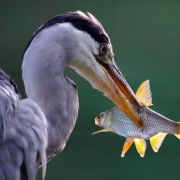No Swim Zone
South Florida is a popular destination for water activities during the hot summer months. The Lake Worth Drainage District (LWDD) canal system may seem like an appealing spot to cool off, swim, or enjoy a day of fishing. However, it’s important to recognize that these waterways can pose significant dangers.
LWDD canals were not designed for recreational use. They serve the critical functions of collecting stormwater for flood control and supplying water to residents and businesses within our area. The operation of this flood control system involves large water control structures that, when opened, can cause sudden changes in water levels and create strong currents that are not always visible from the surface. These currents can catch swimmers and boaters off guard, and near open structures, undertows can be powerful enough to pull swimmers and small boats underwater.
Canal banks lack protective barriers and may collapse due to the soft sandy soil and underlying rocks. Once in the water, the steep slope of the canal bank can make it extremely difficult to climb out. Depending on the time of day or the location of the canal, cries for help may go unnoticed.
Numerous hidden dangers and submerged hazards lurk within the canals, such as broken glass, scrap metal, bottles, cans, and wildlife including alligators, snapping turtles, and snakes. Diving in these canals is particularly hazardous due to varying depths and submerged aquatic vegetation that can entangle limbs.
To ensure safety, adhere to a few essential guidelines: refrain from swimming in canals; opt for safer environments like pools or beaches instead. Maintain a safe distance from canal banks to prevent accidental falls into the waterway, and always steer clear of water control structures.
For more comprehensive water safety tips, visit the Palm Beach County Drowning Prevention Coalition’s website at http://discover.pbcgov.org/drowningprevention.






